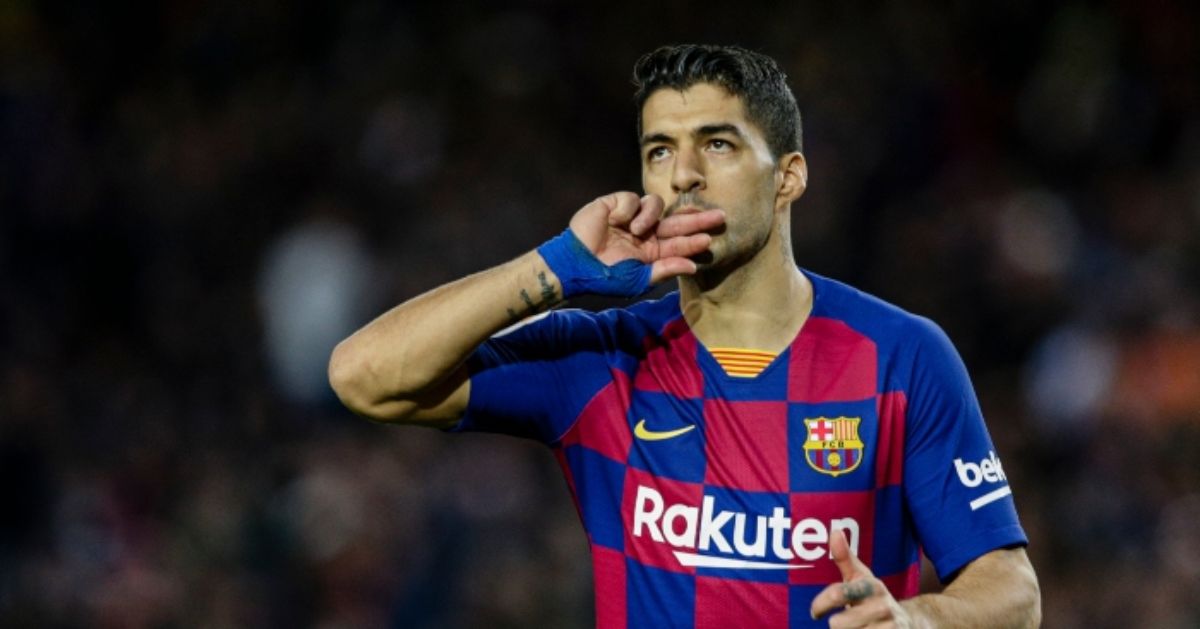Bigger than Michael Jordan? Messi, Miami & American soccer’s brave new chapter
History works in mysterious ways. Sometimes a tiny pebble drops into an ocean, making the smallest wave you ever saw, that little wave crosses paths with another little wave, forming a medium wave.
That mid-sized wave meets another… you see what I’m getting it. Soon enough you have a tsunami and coastal cities are sh*tting their pants.
Sometimes entire cliff faces plummet into the ocean and nobody is any the wiser.
Lionel Messi’s move to Inter Miami was like a small planet smashing into ocean somewhere off the Eastern Seaboard, and the waves caused by that impact may reach far into the future of American soccer.
Remember when Erica Cantona kung-fu kicked a Crystal Palace fan, got banned from playing for eight months, and spent that time nurturing the class of ’92 into what would become one of the greatest football teams in the history of the sport?
Messi may have a similar impact on the youth of America, and we’re going to tell you for why.
• • • •
QUIZ: Can you name every club Lionel Messi has scored a hat-trick against?
• • • •
I spent the summers of 2016 and 2017 teaching music at a summer camp in North Carolina. It was a boys’ camp, and it had a heavy emphasis on physical activity and high adventure.
The kids came from all over the States and Latin America and, obviously, I encouraged the kids I looked after to play soccer whenever they were given the opportunity.
I watched the games whenever I could, and I found it fascinating. The boys were between 11 and 15 years old—an impressionable age when boys are looking for role models to idolise and emulate—and I noticed something interesting.
The American kids were generally very athletic, strong, quick, they could shoot with power, and they had football boots worth hundreds of dollars.
The boys from Spanish-speaking countries or territories (Mexico, Guatemala, Puerto Rico etc.) generally played in trainers and were less blessed in terms of physicality, but they regularly played the Americans off the park.
If you were running some sort of combine event, like they do in American football, just looking at jump height, sprint speed, shot power—immediately obvious attributes—you’d pick the Americans every single time.
But the Spanish-speakers had something the Americans didn’t. They’d been brought up during Pep Guardiola’s time at Barcelona, their first footballing memories were of Spain’s dominance in the Euros and World Cup, and they idolised Andres Iniesta, Xavi, Sergio Busquets, and Lionel Messi.
• • • •

QUIZ: Can you name Barca’s top ‘not Messi’ scorer for every season since 2000?
• • • •
The American boys never stopped talking about ‘CR7’ (pronounced with the hardest of ‘R’s). When they received the ball, nine times out of ten they’d dribble, throwing in as many tricks and feints as they could, only passing as a last resort.
The non-Americans would play first-time passes, they instinctively knew where their teammates were going to be and, occasionally, they’d ping one in the top corner from long range just to keep the opposition on their toes.
It reminded me of playing Tekken 3 on my tiny box-shaped television with the curvy, static-addled screen — a karate master fighting a boxing champion, a sumo wrestler versus a judo expert. Two completely contrasting styles interacting with each other.
It’s an interesting concept to ponder because you can come at this from different angles. You might think that having all the physical attributes—the quick feet, the acceleration, the tricks—is the perfect foundation for a young footballer to build upon. You can teach them tactics later.
Like Jeremy Doku at Manchester City. Pep Guardiola can tell you what to do and how to play, but it’s much more difficult to teach someone how to wriggle out of a three-man press.
READ NEXT: The 14-year-old ‘American Messi’ is Manchester-bound & we should all be terrified
TRY A QUIZ: Can you name every player to make the Ballon d’Or podium in Messi’s eight wins?
Alternatively, you could argue that game intelligence is difficult to impart upon a footballer who has grown up with bad habits, and that technique can always be honed, whereas instinct and speed of thought is something that is moulded over decades.
What’s certain is that Leo Messi’s cultural impact in the United States is far bigger right now than it ever has been before.
Cristiano Ronaldo is playing in Saudi Arabia, thousands of miles and somewhere between seven and eleven time zones away. Messi is far more visible to American audiences.
Legendary USMNT and Premier League goalkeeper Brad Friedel has seen it with his own eyes.
“Since Beckham, I haven’t seen or heard of anything quite like this in the U.S. I live in Miami and you would hardly have known that Inter Miami was a team.
“But overnight they are everywhere you walk. There are pink and black shirts, there are Messi shirts, there are billboards, everybody wants a ticket!” He told The Mirror.
Inter Miami’s average attendance is up 40% since last season—easily the biggest increase in the league—and Major League Soccer in general experienced the biggest growth in attendance of any North American sport last year.
That is largely down to the arrival of Messi and his old pal’s from Barcelona — Luis Suarez, Sergio Busquets, and Jordi Alba.
• • • •
QUIZ: Can you name Barcelona’s XI from Lionel Messi’s La Liga debut in 2004?
• • • •
To add some context, MLS was the fifth-most attended football league on the planet in 2023, ahead of the English Championship, the French Ligue 1, Brazil’s Serie A, Liga MX in Mexico, and the Eredivisie.
ESPN’s Luis Miguel Echegaray wrote, “Messi is the biggest arrival in American sports history, and when it’s all said and done, he will have been (along with Michael Jordan) the biggest star to have ever played here.
“I have been covering his story since even before his arrival, talking to people from all over the country and seeing how this diminutive man is writing a new chapter of sports and culture in America.
“I keep getting texts and emails from friends who have never before cared about the game.”
Now, the financial impact is obvious for all to see. The numbers are plastered all over the internet—you can google them at your leisure—and that’s great for soccer in the States and Canada. More investment = more facilities = more opportunity = greater success.
But that would also have been the case is Cristiano Ronaldo had moved to MLS rather than Saudi Arabia. I think there’s a less tangible factor at play here, and I think it could very well be the making of the US and Canadian national teams in years to come.
And here’s why.
Ronaldo, whatever you think of him, has always been obsessed with personal accolades. An individualist in a team sport.
Had he been a snooker player, or a swimmer, or a decathlete, he’d probably be the undisputed greatest of all time. But he plays football, and individualism can only get you so far in football.
• • • •
QUIZ: Can you name every trophy that Lionel Messi has won in his career?
• • • •
We don’t know what’s in Leo Messi’s head. Maybe he’s just as driven by legacy and individual brilliance as Ronaldo, but he doesn’t play that way.
He is happy to give the ball to his teammates, to assist and create, to make decisions that benefit his team as well as himself, rather than relying on superhuman feats of athleticism and power.
Ronaldo forces the ball to do almost unnatural things—the knuckleball free kicks the bicycle kicks ten feet in the air—and that is incredibly impressive. Messi treats the ball as a friend, guides it to where it wants to go and, in turn, allows the ball to work for him.
In a country where interest in soccer is on the rise, seeing Lionel Messi play in person or on television every week is an invaluable source of inspiration to any aspiring footballer.
The US and Canada will still have their athleticism and their competitiveness fuelled by their cultural climate and college scholarships, but if they can channel that into a footballing philosophy that allows each player to bring the best out of their teammates, forming a team greater than the sum of its parts, then the national teams of North America are going to be a force in a decade or so’s time.
Cristiano Ronaldo would have been a phenomenon in the States, there is no question about that.
But a close-up view of Messi, Busquets, and the boys might be just the cultural reset American soccer needed to make the next big push forward.
By Andrew Martin

























